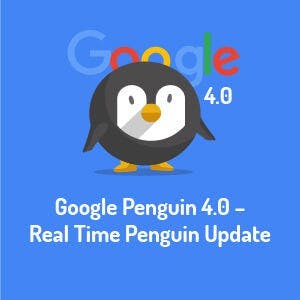Know Penguin 4.0 Better!

With the rapid day to day changes in technology, there are many challenges everyone is facing. Most of the websites are facing issues with Google algorithms. Google algorithm is a basic set of guidelines that must be obeyed by every website throughout the world in order to have quality maintained and high rankings in Google. Google Penguin is a code name for the Google algorithm update. If you’re a website administrator, you might be well known about Google algorithm and Penguin 4.0 as well. Even if you are unknown don’t panic. Here are all basic you need to know about Penguin 4.0.
The main aim of Google Penguin is to decrease the search ranking of websites that violates the Google Webmaster Guidelines. On 23rd September 2016, Google confirmed Penguin 4.0 is rolling out together in all languages in real-time. Penguin is now real-time and granular.
Here’s a simple timeline with Penguin Version Release Dates.
Penguin 1.0: 24th April 2012
Penguin 1.1: 26th May 2012
Penguin 1.2: 5th October 2012
Penguin 2.0: 22nd May 2013
Penguin 2.1: 4th October 2013
Penguin 3.0: 17th October 2014
Penguin 4.0: 23rd September 2016
Penguin algorithm is the strongest algorithm by Google which gets refreshed time and again. Google’s core algorithm Penguin was released at the same time for all the countries and languages throughout the world. Penguin 4.0 is real-time means any page ranking may change each time immediately. The algorithm is now focused on toxic links only rather than whole websites. Before the rollout of Penguin 4.0, the whole website would get penalized rather than pages responsible for spam. Google penalties are more frequent. Never forget, now or never content is still the king. Google Penguin basically tracks and monitors the web spams done externally on several web resources. And the most affected aspect by Google Penguin is link building; which has a positive and negative impact on every website depending upon the policies set by Google. Google Penguin can make huge changes in websites. Some websites can get higher ranks whereas some ranks can get decreased depending upon the policies by Google.
Here are a few strategies you need to apply for getting your website safe from being penalized.
1. Start link building by targeting deep links more and more.
2. Focus on local SEO while posting classified. Try using IP changers while posting classified if you’re not in the region.
3. Since you cannot be assured regarding the quality of the link, it is strongly suggested for you not to buy the links.
4. Avoid black hat techniques instead of going for a white hat and mind it black hat techniques will have a positive impact on your website temporarily and slowly by slowly negative impact on your website in upcoming days.
5. If the site looks like spam, then immediately email them to remove your link from their site else disavow the links using Google Webmaster Tools.
6. Comb over your content and make sure none of it is breaking Google’s rules.
7. Focus on quality blog posts to get natural backlinks and avoid repetition of the same keywords.
8. Improve user experience, make the sites mobile-friendly. Since most people visit the website through their smartphones, optimizing your website for mobile has become one of the best SEO practices.
9. Optimize your internal linking profiles and assure you have quality links.
10. Ignore low site index links and update the contents available on your website.
The Penguin portion of the algorithm will always be “on” and updating. Future Penguin updates will no longer be confirmed by Google because the update is becoming a real-time part of the algorithm.
With the release of Penguin 4.0, we can expect huge changes in various websites especially for the ones which are having competition. The website ranking shall directly be impacted with Penguin 4.0 either positively or negatively. Website administrators should be aware of regarding the status of backlinks on their website and must always be up to date with Google Webmaster Tools. Secure your website and stay high ranked on Google!
References:
1. Penguin is now part of our core algorithm (2016, September 23)
Retrieved from:
https://webmasters.googleblog.com/2016/09/penguin-is-now-part-of-our-core.html
2. Google Algorithm Change History (2000–2016)
Retrieved from:
https://moz.com/google-algorithm-change
3. Google Penguin (2016, October 21)
Retrieved from:
https://en.wikipedia.org/wiki/Google_Penguin
4. Penguin 4.0 Update (2016)
Retrieved from:
http://www.seobook.com/penguin-40-update
5. Patel N. (2016) How To Identify And Recover From A Google Penguin Penalty
Retrieved from:
https://www.quicksprout.com/university/how-to-identify-and-recover-from-a-google-penguin-penalty/
6. Gavrilas R. (2016, September 23) Google Penguin 4.0 Goes Real-Time! Massive Google Fluctuations Retrieved from:
http://cognitiveseo.com/blog/10409/google-penguin-4-0-released/
7. Maskey A. (2016, November 5) Penguin 4.0 — Part of Google’s Algorithm
Retrieved from:
https://aaganmaskey.blogspot.com/2016/11/penguin-40-part-of-googles-core.html
PS: This article is retrieved from aaganmaskey.home.blog
